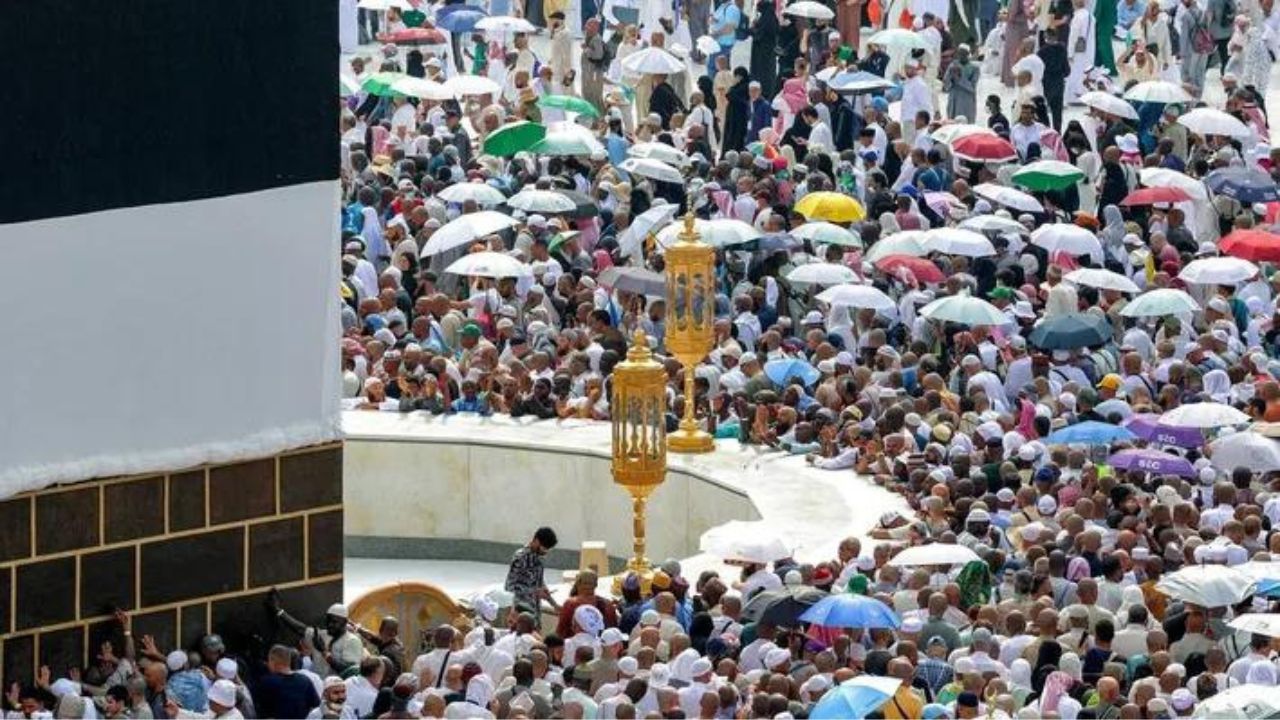Over 1000 Hajj Pilgrims Die Of Heat: Know More Here
After walking for 20 kilometres under the scorching Saudi Arabian sun, Hoda Nagib informed her husband that she needed to take a break. The pair, who are in their 60s, had just ascended Mount Arafat with thousands of other white-robed pilgrims as they made their way to Mecca, the holiest city in Islam, where recent days have seen temperatures as high as 51.8C in the shade.

To carry out a custom known as the “stoning of the devil,” Nagib’s husband abandoned her. Their neighbor Walaa Roshdy explained that she had vanished when he returned.
Roshdy claimed that other pilgrims informed him that his wife had been transferred to a hospital in Mina due to tiredness. When the husband went to the hospital, staff informed him that his wife had been treated and had departed. Roshdy claimed that the husband had asked for anonymity while he looked for his wife. Since then, he has been unable to get in touch.
The pair is well-known to Roshdy, a Saudi Arabian tour guide, as she was raised in Tanta, Egypt.
“We have contacted all relevant Saudi authorities but we are sure that this is going to take a long time because there are thousands of people who are missing,” he said.
Figures collated by Arab diplomats who talked with the AFP news agency show that over 1,000 pilgrims had perished during this year’s hajj due to the intense heat. Like the Nagibs, the vast majority were unregistered pilgrims from Egypt who entered Mecca without the formal licenses that are currently mandated by Saudi law.
On Friday, a top Saudi official defended the nation’s handling of the trip. In the government’s initial remarks regarding the killings, the official told AFP, “The state did not fail, but there was a misjudgement on the part of people who did not appreciate the risks.”
The Hajj pilgrimage must be completed at least once in a lifetime by all Muslims who are capable of doing so. To make the journey more comfortable, Saudi officials have taken action to reduce crowding and provide amenities like air-conditioned tents, although they are only accessible to those who have registered as pilgrims.
“Tour companies were supposed to warn people about all this, but they just want to make money,” said Roshdy.
A Turkish travel operator named Yasemin Mertcan shared a video showing weary pilgrims lying on the side of open roadways in the Mecca area on social media. Some of the pilgrims were dousing their unconscious companions with water in an attempt to revive them.
The footage from Mertcan also showed some pilgrims assisting Saudi security officers with the loading of bodies covered in burial shrouds onto carts for removal.
“This year has been incredibly challenging. Mertcan stated, “There are a great deal of pilgrims that are missing and dead.
As part of the Vision 2030 plan, which intends to wean the country off of oil money with measures like greater tourism, the Saudi authorities have stated that they want to raise the number of pilgrims visiting Mecca year-round to 30 million by 2030.
The Saudi government launched a campaign this year called “no hajj without a permit” in an attempt to prevent a recurrence of the fatal crash in 2015. The Mecca authorities emphasized that anyone attempting to enter the holy city without the necessary license would face severe consequences.
The Saudi Arabian government was criticized by the opposition National Assembly party, which is made up of exiled Saudi dissidents, for their “negligence” toward the pilgrims and for their “systematic media blackout” over the killings.
The Nagibs arrived in Mecca two months ahead of the start of the Hajj. They paid an Egyptian broker the equivalent of £2,155 for the illicit pilgrimage, which involved them sharing a simple lodging with six other people outside the holy city and more walking than legitimate pilgrims.
They got there just before Saudi Arabia and most of the Middle East were engulfed in scorching early summer temperatures.
Already among the areas most at risk from the climate problem, which intensified the summer scorching, is the Gulf. According to the Climate Shift Index, the hajj temperature in Mecca was 2.8C higher than usual, with climate change mostly to blame for the increase.
Human endurance can be pushed to the limit by even little temperature increases during activities like the hajj, which takes place in the warmer months. Rising summertime temperatures might put pilgrims attending the event in “extreme danger,” according to a 2019 MIT research.
Many pilgrims, according to Roshdy, were elderly and had saved for years to perform the hajj. They also had underlying medical concerns that made them more vulnerable to the harsh weather and the hours spent outside.
“Those people cannot walk for all these distances in such extremely hot weather,” he said. “All of this is because the tourism companies and brokers want to make money.”


Comments are closed, but trackbacks and pingbacks are open.